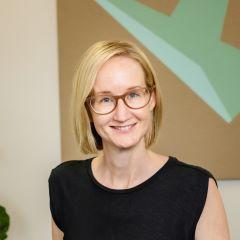Blog post – What I learned about teaching from the President of the Academic Board
Quick answer: A simple and easy way to acknowledge students as individuals in large classes that anyone can do in any discipline and in any course.
It was the first lecture in a first-year course. He introduced the course and the teaching team. He did what you would expect in a first lecture. But then he did this simple yet powerful thing.
He asked students to raise their hands as he mentioned different areas of interests. Raise your hand if you:
- are studying biology, physics, psychology, earth sciences… (could be any degree program or major)
- are new to UQ
- have studied at another university
- were born overseas
- speak more than one language
- are feeling nervous about the course.
In the lecture theatre, I watched as students were twisting their heads to see the hands rising and falling across the lecture theatre. All the while he was telling them what he studied, the disciplines of the teaching team, that he only speaks one language but wished he knew more, and how he was feeling.
Such a simple activity that signalled to students that he saw them as individuals within a larger cohort. It allowed him to acknowledge differences that he later explained as being important to the course, its design, and how students would be learning together.
The questions he asked could have been different. They suited his teaching context: a first-year, first-semester interdisciplinary course in a generalist degree program. Because students are more than what they study, he went further than just focusing on students’ disciplines. He acknowledged different backgrounds to welcome non-Australian students. Importantly, he discussed emotions, which are often overlooked yet go hand-in-hand with the deep intellectual task of learning and challenging ourselves.
I was observing Professor Peter Adams a decade ago - he is now the President of our Academic Board. It was a collegial and informal process that was not a part of any formal peer observation program. To this day, I still use Peter’s activity. Of course, I change it up because I teach in a very different discipline with smaller classes and in upper-level courses. Regardless of my teaching context, I still remember to start all my classes by acknowledging the people in the room.
More than a ‘hand-raising’ activity, Peter taught me to see the students in my class as people worth acknowledging. No matter how you do it, start your first lecture by acknowledging the people in the room. And in every class following, remember to acknowledge the people in the room. It can be as simple and easy as starting each class by asking students, ‘how are you all today?’
What do you do in your first lecture?
If you have an interesting approach or unique ‘first lecture’ story, share it with the UQ Teaching Community. Email k.matthews1@uq.edu.au.

